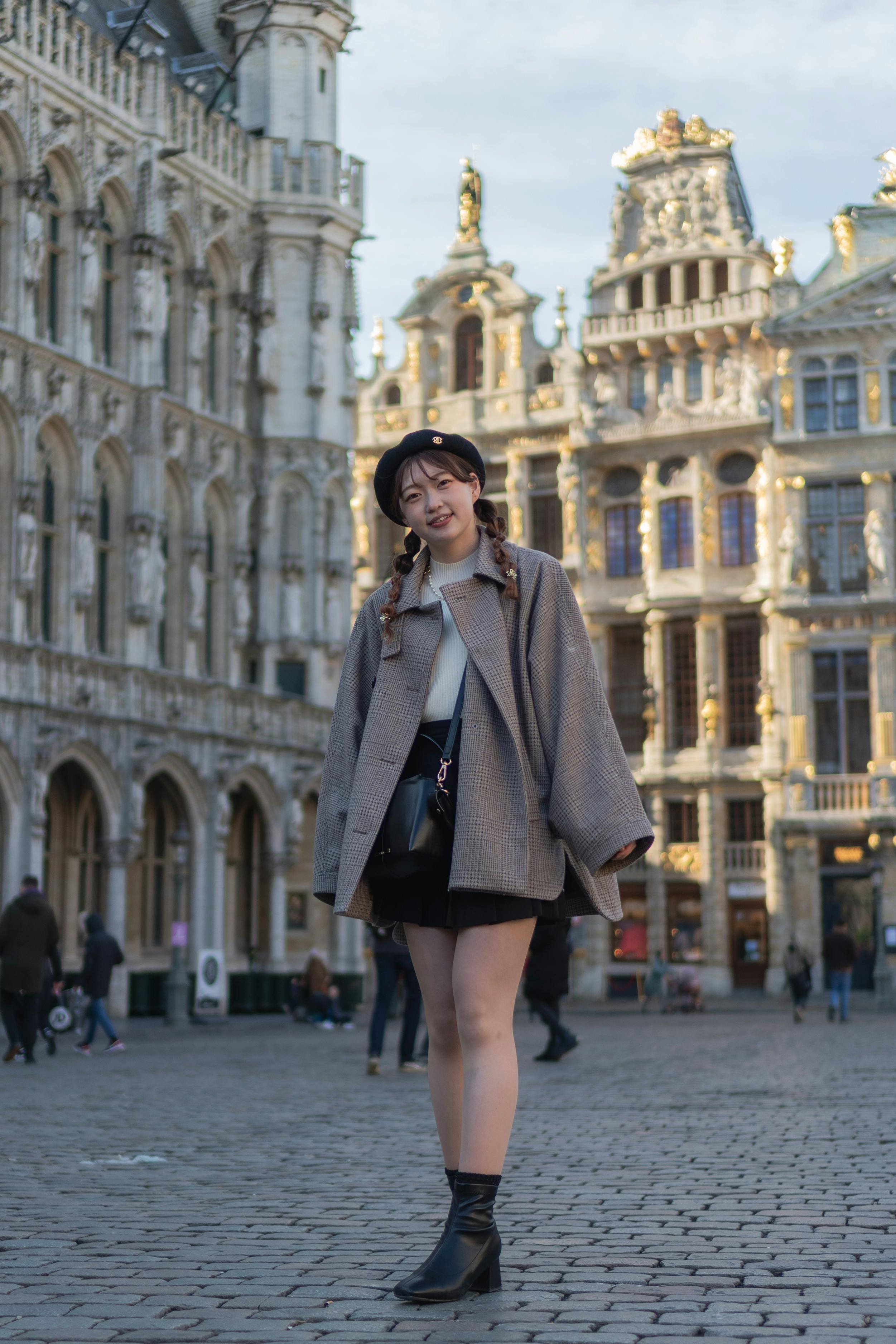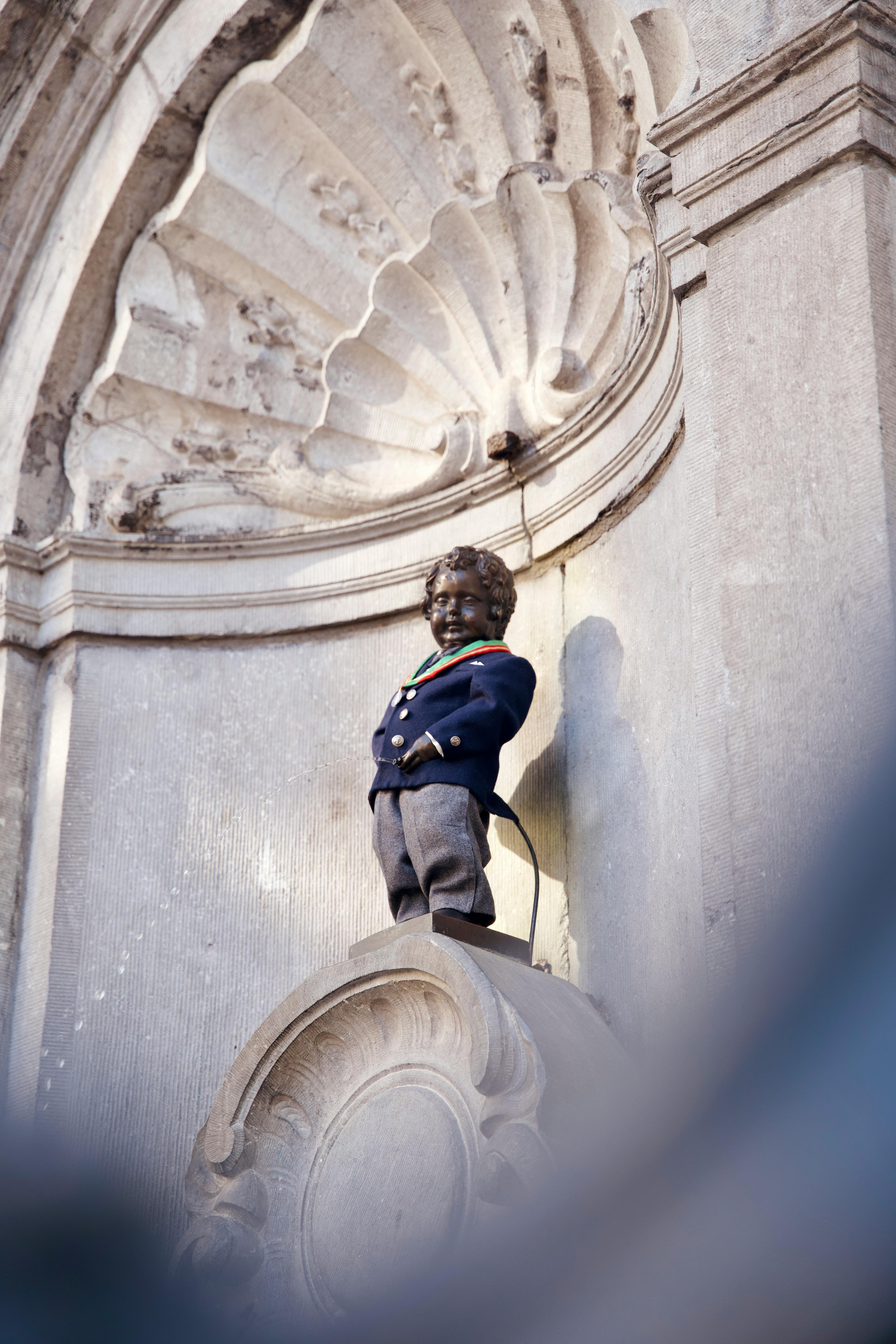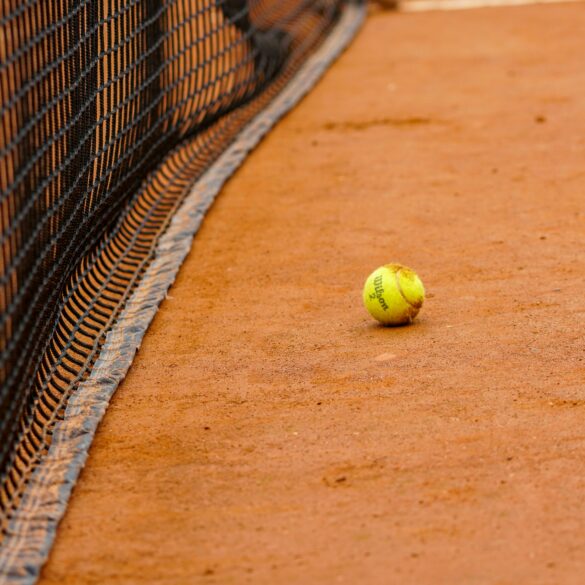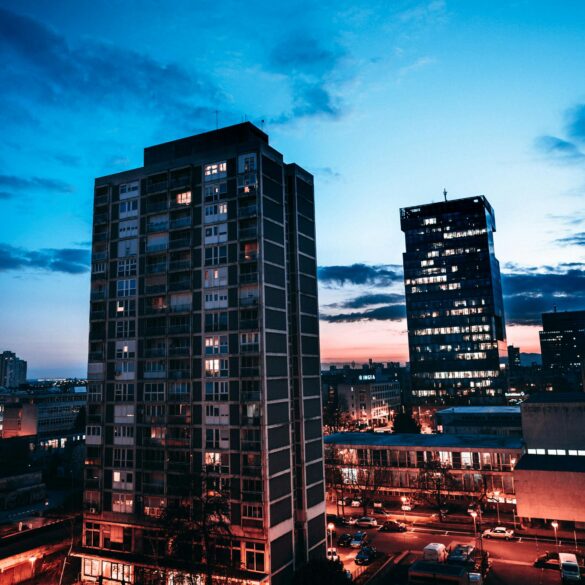Things to Do in Brussels: The Insider’s Guide for Authentic Discovery
Before you even consider hopping a train—or browsing for Eurostar bargains—have you ever genuinely wondered, “What is it about Brussels?” Most people know it as the “capital of Europe” or simply a stopover between Paris and Amsterdam. But if you scratch the surface (as I’ve done, more than I ever expected!), you’ll quickly discover Brussels is one of Europe’s most complex, storied, and flat-out fascinating destinations. Here’s what I’ve learned: This city rewards both aimless wanderers and meticulous planners. And oddly enough, half the time, just when you think you’ve figured out Brussels—its rhythms, its quirks, its “must-dos”—it upends all your neat categories and surprises you. Every. Single. Time.
So, whether you’re planning your first Brussels itinerary, returning for a second bite (or waffle), or just armchair traveling for now, you’ll find this guide gets beyond the tourist-veneer and dives into what actually makes Brussels tick. There’s the expected: Grand Place, the Atomium, a procession of museums, chocolate shops, and enough frites debates to spark a diplomatic row. But I’ll be honest: the real magic lies in decomposing the cliches, straying down Art Nouveau side streets, sampling spontaneous street food, and, yes, having an unhurried beer with locals who will have strong, hilarious opinions about “what you really ought to do.” Let’s uncover Brussels with that genuine, slightly chaotic spirit in mind.
Brussels’ Iconic Sights (and Why They Matter)
Let’s get the so-called “big ones” out of the way—but, honestly, I urge you to see them through an unhurried, skeptical, and personally curious lens. Grand Place (Grote Markt) isn’t just a stunning square—it’s a living economic-aristocratic chessboard, rebuilt after French bombardment in 16951. You’ll stand in the middle, spinning in place, and—like I did your first time—be stunned by the gold, the spike of the Town Hall, the medieval guildhalls. There’s an energy here at dawn that’s totally different from the mobbed summer evening. Actually, one of my favorite tricks? Visit super early before the patisserie deliveries. The city’s heartbeat pulses through these stones.
- Grand Place: UNESCO-listed, host to the epic biannual Flower Carpet, seasonal Christmas market, and a must for orientation.2
- Atomium: Space-age, an architectural remnant of 1958’s World’s Fair, and—believe it or not—one of the best panoramic views in the country. (Is it beautiful? People debate this endlessly… I find it delightfully weird.)3
- Manneken Pis: Yes, the “wee peeing boy” is tiny, but the surrounding street art and frequent costumes are half the fun. Nobody tells you about the local rivalry with Jeanneke Pis and Zinneke Pis a few blocks away.4
- Parc du Cinquantenaire: Under-appreciated unless you’re a museum buff or fancy a proper city picnic.5
Insider Tip:
If you visit Grand Place, look up. Find the golden swan—it’s the old Guild of Butchers. Karl Marx drafted part of the Communist Manifesto inside, which (I’ll admit) blows my mind every time.6
Here’s what really stands out: Atmosphere and context. You can tick the checklist, sure, but what actually matters is how you relate to these places. Perhaps that means watching a local wedding on a Saturday morning. Maybe it’s slipping away to explore the comic murals nearby. Don’t buy into the “see it, selfie, leave” myth—whatever you do, pause and breathe in the city’s contradictions.
Did You Know? Brussels is officially bilingual—French and Dutch (Flemish)—but you’ll overhear Arabic, Spanish, German, and English on nearly every corner. It’s a city of staggering cultural messiness and multicultural overlap.
Connect With More Than the Monuments
What I love: Even at the Atomium or Grand Place, you’ll spot students sketching, musicians playing, activists handing out leaflets. Brussels’ “icons” pulse with messy, modern life.
Hidden Gems & Offbeat Discoveries
Here’s where Brussels gets genuinely addictive for travelers who hate being herded around. I’ll say it up front: The best moments I’ve experienced here happened when plans fell apart or I zigged when every “top ten” list told me to zag. Finding these secret, soulful places requires a bit of curiosity, some strategic wandering, and the humility to admit you’ll get lost (I always do).
- Ixelles Ponds & Art Nouveau Streets: Victor Horta’s masterful façades decorate leafy byways—Avenue Louise to Rue Américaine is my preferred walking meditation. The Horta Museum itself is pure design ecstasy.7
- Saint Gilles: Diverse, gritty, and full of welcoming Moroccan bakeries and creative start-ups. Spend an afternoon hopping between street murals and small galleries. I’ll admit, back in 2019, I stumbled on a poetry slam in a grocery co-op here, and it changed my understanding of “real” Brussels.
- Marolles Flea Market: Place du Jeu de Balle offers madcap browsing—vintage buttons, antique maps, that one elusive Tintin collectible you’ll regret leaving behind. You never know who you’ll meet; one morning, an accordionist serenaded me while a local explained the history of the market (which goes back seventeenth century).8
- Laeken Cemetery: Okay, bear with me—a cemetery? The “Belgian Père Lachaise” stuns with elaborate mausoleums and Art Nouveau tombs. Bring a book, breathe, be still.
- Comic Strip Route: If you’re at all a fan of Tintin, Spirou, or Lucky Luke, the city itself becomes your open-air graphic novel. Start near De Brouckère, follow the painted façades, and you’ll experience Brussels’ playful side.9
What If You Only Have 24 Hours?
Here’s the reality: Skip a few icons, and spend time in Marolles, Ixelles, and Saint Gilles. Walk, don’t just Uber. Chat with street vendors, try a random bakery. Those are the moments you’ll replay years later.
Food, Drink & Culinary Revelations
Let’s kill the stereotype: Brussels isn’t just about waffles and fries—though, genuinely, their twice-fried golden perfection is worth your cholesterol anxiety. This is culinary fusion central, thanks to centuries of migration and the city’s global role. But be warned: The “tourist trap” menus lining Rue des Bouchers are best treated with suspicion. Here’s my personal Brussels food pyramid, built on stubborn experience and the occasional culinary mishap.
- Belgian Beer Cafés: Start with a lambic or tripel at a brown café. I recommend Moeder Lambic Fontainas; ask for what’s fresh on tap.10
- Frites Stalls: Maison Antoine (Place Jourdan) is the classic. Curry ketchup or andalouse sauce? That is the eternal question.
- Chocolatiers Beyond Godiva: Marcolini, Wittamer, and Passion Chocolat—skip the airport gift boxes and taste real craft.11
- Mediterranean/Levantine Fusion: Around Châtelain and Flagey, Turkish, Greek, and Lebanese cafés serve astonishing mezze at good prices—an under-rated Brussels treat. That’s insider info.
- Brussels Waffles: There actually is a difference between Brussels and Liège waffles. The former is crisp, square, and topped with fruit or chocolate; the latter, dense, sweet, and caramelized. Street stands near Galeries Royales Saint-Hubert are my go-to for a genuinely fresh experience.
| Place | Food/Drink | Why Go | Insider Tip |
|---|---|---|---|
| Moeder Lambic | Craft Belgian Beer | Huge tap list, locals hangout | Let staff pick for you |
| Maison Antoine | Frites (fries) | Best texture combo, classic sauces | Order small and try 2 sauces |
| Marcolini | Handmade Chocolate | High craft over branding | Sample before buying boxes |
| Le Châtelain | World Cuisine | Affordably creative meals | Try weekday lunch for deals |
Avoid the Tourist Pitfalls!
Don’t order mussels outside the local season (September–February for best quality). Trust me—I learned the hard way. Opt for smaller, neighborhood bistros, especially for stoemp (a glorious mash comfort food) and carbonnade flamande (beef stew).

Art, Culture & History Unleashed
Whenever people ask me, “Is Brussels a cultural city?” I almost want to laugh—it’s an embarrassing understatement. This place teems with everything from surrealist masterworks (go see Magritte’s pipe—it’s “not a pipe”—at Musée Magritte12) to experimental theater crammed above unassuming bars. But here’s the tricky bit: culture here doesn’t shout. You have to look, wander, linger. Sometimes you’ll trip over it by accident, the way I did at a contemporary dance workshop inside Bozar Center. Other times, you’ll plan a whole day around an exhibition—only to get side-tracked in a sculpture-filled garden or tiny street festival.
- Royal Museums of Fine Arts: Five museums for one ticket—Renaissance, Old Masters, Modern, Magritte, and Wiertz. It’s overwhelming but, honestly, a rainy day in Brussels has never passed so quickly.13
- Bozar Centre for Fine Arts: Concerts, avant-garde art, film series. Sometimes the best plan is no plan; check out the program last minute for true surprises.14
- Train World Museum: Seems odd? But if you’re a transport geek, this is world-class.15
- Music Instrument Museum: Housed in one of the city’s wildest Art Nouveau buildings—and that rooftop cafe? All-time favorite lunch spot with a view.16
How to “Do” Museums Without Getting Overwhelmed
My advice? Choose one or two collections only per day. Pair a museum visit with a nearby cafe, and don’t try to “see it all.” The best discoveries are accidental—a singer rehearsing in a lobby, an artist sketching in the corner. (And yes, I’ve made the mistake of trying to jam four museums into one afternoon. Never again.)
Seasonal Experiences & What Not to Miss
I’ll admit, timing changes everything in Brussels. A winter visit turns Grand Place into a sparkling, festive maze—but, honestly, it’s the side streets with mulled wine and hand-knit scarves that really make it feel magical. Meanwhile, summer is for outdoor concerts, picnics in Parc du Cinquantenaire, and city-wide comic festivals. Don’t let the weather scare you: Brussels’ clouds and drizzles are part of its identity; just pack a compact umbrella and go anyway.
- Flower Carpet (August, even years): 700,000 begonias, mind-blowing patterns, only two days. Book early, and accept that crowds are unavoidable.17
- Brussels Christmas Market: “Winter Wonders”—expect rinks, light shows, and a culinary overload.18
- Ommegang Festival (July): Medieval pageantry, horses, jousting, everyone in costume. Kids (and adults!) love it.19
- Comic Strip Festival (September): Parades, workshops, family fun—and the chance to meet cartoonists.
- Brussels Summer Festival: 10 days, dozens of genres, historic venues get wild.20
Belgian Law, Fun Fact: Did you know nearly every major Brussels event must accommodate both French- and Dutch-language signage, plus translations for visiting EU officials? Nobody does multilingual logistics quite like Brussels!
Pro Planning Tip
Use the official tourism calendar for up-to-date event listings—and always check for train and tram schedule changes during major citywide festivals.
Practical Tips, Transport, and Staying Sustainable
Okay, let’s get real—logistics can make or break the Brussels experience. I won’t sugarcoat it: the city’s language tangle, tram networks, and confusing signage can catch out even savvy travelers. More than once, I’ve jumped on the wrong metro platform (trust me, always double-check “direction”), and back in 2017, I once spent an hour untangling tickets at Bruxelles-Midi. Let me save you time, stress, and the classic “Why did I buy three tickets for one journey?” moment.
- Public Transport: Use the STIB/MIVB app to navigate trams, buses, and the metro. Day-passes outcompete point-to-point fares for most itineraries.21
- City Card: The Brussels Card bundles unlimited transit with museum entries—worth it if you’re planning three or more attractions per day.22
- Walking Rules: Watch for cyclists, even on supposedly “car-free” streets. And mind the cobblestones—“sensible shoes” aren’t just for your parents.
- Accessibility: While new trams and museums are step-free, many cafes and heritage sites aren’t yet fully accessible. Always confirm in advance.23
- Sustainable Choices: Rent a city bike (Villo!), choose tap water over bottles, and pick eco-certified hotels whenever possible.24
Schema Markup Tip
Embedding TouristDestination Schema on destination posts can help your blog stand out in search results—and, for local businesses reading this, absolutely impacts your click-through rates.
Global Leader: Brussels ranked as one of Europe’s most sustainable conference destinations in 2023. That’s not just greenwashing—the city council implemented major eco-transit upgrades post-pandemic.25
Living Brussels: Local Life & Insider Advice
For me, this is the soul of the city—and what separates “sites” from belonging. Locals joke Brussels is both “Belgian” and not (the EU quarter is like its own planet). But if you seek out local markets—think Chatelain Wednesdays—or linger in cafes away from the old square, you’ll find something precious: everyday Brussels. Chatting with neighbors, cycling along Canal Brussels-Charleroi on a Sunday, hearing political rants in four different languages in a single metro ride—these moments matter.26
Call to Action – Share Your Brussels Story!
What has Brussels given you—surprise, struggle, inspiration, a craving for another round of waffles? Share in the comments or on social, and help future travelers get real advice straight from real people.
References & Additional Resources
References
Ready to Experience Brussels?
Whether you’re a first-timer or repeat visitor, approach Brussels like a living, evolving story. Each visit is different; every street offers new surprises. Let curiosity—not guidebooks—set your path, and you’ll find your personal Brussels.



